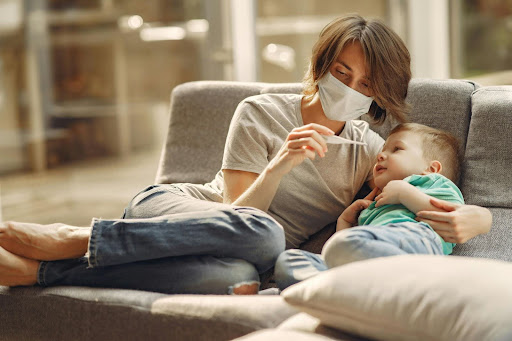How to Treat Seasonal Allergies in Kids
May 19, 2024

Are seasonal allergies making your child miserable? You’re not alone! Find effective ways to treat seasonal allergies in kids and manage your child’s allergies with our expert advice.
Seasonal allergies can be a real challenge for kids, causing a range of uncomfortable symptoms that can impact their daily lives. But don’t worry, you’re not alone. An estimated 7.1 million kids in the United States suffer from environmental allergies, and there are many effective ways to manage and treat their symptoms.
What are Seasonal Allergies?
Seasonal allergies, also known as allergic rhinitis or hay fever, occur when airborne allergens enter the eyes, nose, and throat, triggering an allergic reaction. Common allergens include tree and flower pollen in the spring, grass pollen in late spring and summer, and weed pollen and mold spores in late summer and fall.
Signs Your Child May Have Seasonal Allergies:
If your child is experiencing a stuffy or runny nose, sneezing, itchy eyes and nose, sore throat, cough, or dark circles under their eyes, they may have seasonal allergies. These symptoms can be more than just a minor annoyance, leading to fatigue, poor concentration in school, an increase in ear and sinus infections, asthma exacerbations, and behavioral issues.
Minimizing Exposure to Allergy Triggers:
While it’s impossible to completely avoid allergy triggers, there are steps you can take to minimize your child’s exposure. These include having your child wash their hands and face after playing outside, checking the pollen forecast and limiting outdoor activities when counts are high, drying laundry in the dryer instead of hanging it outside, bathing your child at bedtime, and keeping windows closed and using air conditioning to filter the air.
Treating Seasonal Allergies in Kids:
In addition to minimizing exposure to allergens, there are many safe and effective allergy medications available over-the-counter. These include nasal saline sprays, oral antihistamines, and eye drops. It’s important to talk to your child’s pediatrician or nurse practitioner about the best options for your child, as some medications may not be suitable for young children or may interact with other medications.
1) Nasal Saline Sprays:
A simple nasal saline spray can help flush out allergens and relieve nasal congestion. Your child’s pediatrician may recommend a medicated nasal spray, such as a steroid nasal spray, which is known for its effectiveness and safety record.
2) Oral Antihistamines:
Oral antihistamines vary in how long they last, how well they help itchiness, and their side effects. During an allergic reaction, antihistamines block the production of histamine, which is responsible for swelling and secretions in the body. The “best” choice is the one that alleviates your child’s symptoms.
3) What About Nasal or Oral Decongestants?
Generally, nasal and oral decongestants are avoided due to their side effects. Nasal sprays containing decongestants can cause a rebound runny nose, and oral decongestants can cause high blood pressure, insomnia, and irritability.
4) Topical Treatments for Itchy, Swollen, Watery Eyes:
For itchy, swollen, watery eyes, oral medication may not be as effective as topical eye drops. Allergy eye drops generally contain topical antihistamines and can help relieve symptoms. However, it’s important to avoid using products containing vasoconstrictors for more than two to three days to avoid rebound redness.
Conclusion:
Seasonal allergies in kids can be challenging, but with the right treatment and management strategies, they don’t have to be. By minimizing exposure to allergens and using safe and effective medications, you can help your child enjoy a sneeze-free season.
Book Your Appointment: Book Now
Follow us on Social Media for Regular Updates

